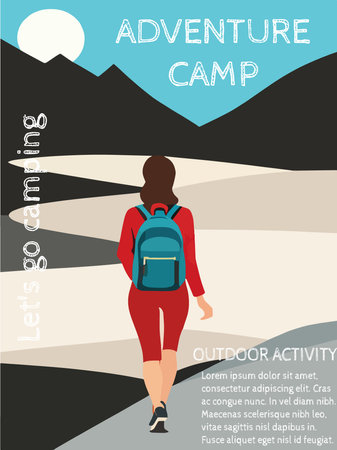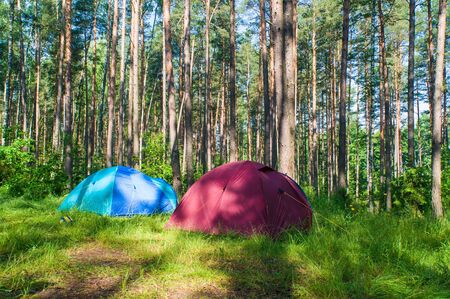Waterproof Clothing and Footwear
When embarking on a hiking or walking holiday in the British countryside, nothing is more vital than arming yourself against the famously fickle weather. Any seasoned rambler will confirm that rain can sweep in without warning, turning a gentle stroll into a test of endurance. Packing wellies—a staple of rural Britain—ensures your feet stay dry and mud-free when crossing soggy fields or negotiating boggy trails. Invest in a high-quality waterproof jacket; look for taped seams and a sturdy zip to repel even the most persistent drizzle. Gaiters are another underappreciated essential, shielding your lower legs from splashes, brambles, and ticks lurking in the long grass. Don’t overlook quick-dry trousers: traditional jeans become heavy and uncomfortable when wet, but technical fabrics wick moisture away, keeping you comfortable and agile. Whether you’re tracing coastal paths or traversing moorland, being properly kitted out means you can focus on the beauty of Britain’s landscapes—not the misery of sodden socks.
Navigation Tools for the British Terrain
If you’re planning to explore the labyrinthine footpaths and sweeping moorlands of the British countryside, having the right navigation tools is non-negotiable. The landscape here is notorious for rapidly changing weather, indistinct trails, and remote stretches where mobile signal can disappear in a blink. Here’s what every hiker and rambler needs to navigate safely and confidently:
Essential Navigation Gear
| Item | Purpose | UK-Specific Notes |
|---|---|---|
| OS Maps (Ordnance Survey) | Detailed, large-scale mapping of footpaths, contours, and landmarks. | The gold standard for British walking; available in paper and digital formats. |
| Reliable Compass | Navigates accurately even in low visibility or featureless moorland. | Look for a Silva or Suunto model—trusted by UK hikers. |
| UK Walking Apps | GPS-based route finding, tracking, and emergency location services. | OS Maps app, ViewRanger, or Komoot are popular choices with British path coverage. |
Why Paper Maps Still Matter
The British countryside is criss-crossed by public rights of way—footpaths, bridleways, and ancient tracks—that aren’t always well-signposted. A physical OS map never runs out of battery or loses signal and shows intricate details like stiles, walls, and even old mining shafts. Always carry your map in a waterproof case—a sudden downpour is never far away.
The Role of a Quality Compass
A reliable compass is your lifeline when fog rolls in across the Yorkshire Dales or Dartmoor. While phone-based navigation is handy, magnetic compasses don’t rely on batteries or satellites. Learn how to orientate your OS map with your compass: it’s a skill that might just save your skin if you stray off course.
Recommended UK Navigation Apps
- OS Maps App: Direct access to Ordnance Survey maps on your phone; plan routes and use GPS tracking even offline.
- ViewRanger: Popular with UK walkers for its extensive footpath database and BuddyBeacon safety feature.
- Komoot: User-friendly for planning multi-day hikes across different regions.
No matter how tech-savvy you are, remember: redundancy is key in the British wilds. Equip yourself with both traditional tools and digital backups to stay safe on every ramble, from Cornish cliffs to Highland glens.

3. Layering and Thermal Essentials
If you’re venturing into the British countryside, never underestimate the power of layering. The weather here is notorious for its unpredictability; mornings can greet you with a biting chill, only to shift to damp mist or brisk winds by midday. That’s why thermal base layers are non-negotiable for any hiker or rambler. Opt for moisture-wicking fabrics that hug your skin – they’ll keep sweat at bay and trap vital warmth close to your body.
Wool socks are another must-have. Forget cotton; it holds moisture and will leave your feet cold and blistered. Instead, invest in high-quality merino wool socks – they’re soft, naturally odour-resistant, and excel at insulating even when wet. Your feet will thank you after hours spent trudging across sodden moorland or clambering over stiles.
For your mid-layer, think versatile insulation. A fleece or lightweight down jacket works wonders, providing an extra barrier without weighing you down. The key is adaptability: you want to be able to add or remove layers as conditions change throughout your walk. In classic British fashion, it’s all about being prepared for ‘four seasons in one day’ – so stack those layers and ensure your comfort whatever the weather throws at you.
4. Daypack and British-Specific Gear
If you’re heading out for a proper ramble across the British countryside, your choice of daypack can make or break your trip. It’s not just about comfort; it’s about readiness for the UK’s famously changeable weather and local quirks. Here’s what to look for when selecting the perfect pack for your walking holiday.
Ideal Daypack Size and Features
The sweet spot for a daypack in the British countryside is between 20 and 30 litres—enough space for essentials without being cumbersome. You want adjustable padded straps, a ventilated back panel to keep you cool on those rare warm days, and a waterproof cover (a must, given the UK’s unpredictable showers). Internal compartments help keep gear organised and dry.
Key Features Checklist
| Feature | Why It Matters in Britain |
|---|---|
| Padded Straps & Back Panel | Comfort over rolling hills and rough paths |
| Waterproof Rain Cover | Essential protection against sudden downpours |
| Internal Compartments | Keeps electronics, maps, and snacks separate and dry |
| Hydration Sleeve or Side Pockets | Quick access to water bottle or flask of tea |
| External Loops/Straps | Attach brolly (umbrella) or walking poles securely |
British-Specific Gear: What Sets You Apart from Tourists
A true Brit knows that certain items are non-negotiable. First up: the flask of tea. There’s nothing like a cuppa halfway up a misty fell—choose an insulated flask that fits snugly in your daypack’s side pocket. Next, pack a sturdy “brolly” (umbrella). While many hikers favour waterproofs alone, a compact yet robust umbrella can be invaluable for sudden showers without the faff of donning full rain gear. Reusable containers for local snacks—think pork pies, Cornish pasties, or flapjacks—are another must. Not only do they keep your food fresh, but they also cut down on single-use plastics.
Recommended Packing List for Your Daypack
| Item | Description/Tips |
|---|---|
| Flask of Tea | Insulated; enough for at least two cups; traditional English Breakfast or Earl Grey preferred |
| Brolly (Umbrella) | Windproof design; compact size that fits in external loop or side pocket |
| Reusable Containers | Sturdy, sealable; suitable for both savoury and sweet local snacks; eco-friendly materials recommended |
| Map & Compass/GPS Device | Packed safely in a waterproof compartment or case; OS Maps are gold standard in Britain |
| Sunscreen & Midge Repellent | Don’t underestimate the sun—or the midges in places like Scotland! |
| Lightweight Waterproof Jacket & Trousers | Packs down small; quick to deploy during sudden rain showers typical of UK weather patterns |
This arsenal ensures you’re ready for whatever the British countryside throws at you—rain, shine, or snack break. With this kit in tow, you’ll blend right in with seasoned locals while keeping spirits high and feet moving strong.
5. Safety and Emergency Kit
No matter how well-prepared you are, the unpredictable British weather and remote countryside paths demand respect for safety. It’s not just about comfort – it’s about survival and self-sufficiency when help could be hours away.
Essential First Aid Supplies
A basic first aid kit is non-negotiable for any hiking or walking holiday in the UK. Make sure yours contains antiseptic wipes, bandages, sterile gauze, tweezers, and a selection of plasters. Don’t overlook blister plasters; with the damp terrain and endless footpaths, blisters can cripple even seasoned walkers. Pack painkillers and antihistamines as well – nettle stings and insect bites are all too common on British trails.
Emergency Communication Tools
If you’re heading into more isolated areas like the Lake District fells or Scottish Highlands, an emergency whistle is crucial. Three short blasts is the recognised distress signal in the UK countryside. Mobile phone signal can be patchy; consider a backup power bank to keep your device charged in case you need to call for assistance.
Lighting for All Conditions
British daylight hours can vanish quickly, especially outside summer months. Always pack a reliable torch (flashlight). A head torch keeps hands free for navigating stiles or reading maps in fading light. Spare batteries are a must – don’t rely on your mobile phone torch, as battery life is precious in an emergency.
Be Ready for the Unexpected
Your safety kit should also include a lightweight emergency blanket or bivvy bag. These can stave off hypothermia if you’re caught out overnight or during a sudden downpour. Waterproof matches or a small fire starter aren’t excessive either – they could make all the difference if things take a turn for the worse.
In summary, a well-thought-out safety and emergency kit isn’t just sensible; it’s essential for anyone serious about exploring the wild heart of Britain on foot. Don’t leave home without it – your next adventure may depend on these small but mighty items.
6. Refreshments and Local Treats
When it comes to hiking and walking holidays in the British countryside, keeping your energy up is vital—and there’s no better way to do it than by embracing Britain’s classic picnic culture. Start by packing homemade sarnies—those humble yet hearty sandwiches wrapped in greaseproof paper—which are a staple on any proper ramble. Opt for fillings like mature cheddar with Branston pickle, or egg mayo with watercress for an authentic British touch.
For a sweet boost, tuck some flapjacks into your rucksack. These oat-packed bars are easy to make at home, travel well, and provide slow-release energy that’ll see you through even the muddiest of footpaths. Pair them with fresh fruit from local farm shops if you’re passing through villages along your route.
A reusable water bottle is non-negotiable. The British weather can be deceptive; even on overcast days, you’ll need to stay hydrated. Many trails pass by public footpath taps or welcoming pubs happy to refill your bottle—so skip the single-use plastic and do your bit for the environment.
Finally, don’t overlook the joy of sharing a thermos of strong tea or locally roasted coffee when you pause to admire sweeping views or ancient stone circles. Little comforts like these are part of what makes exploring the British countryside so memorable.


